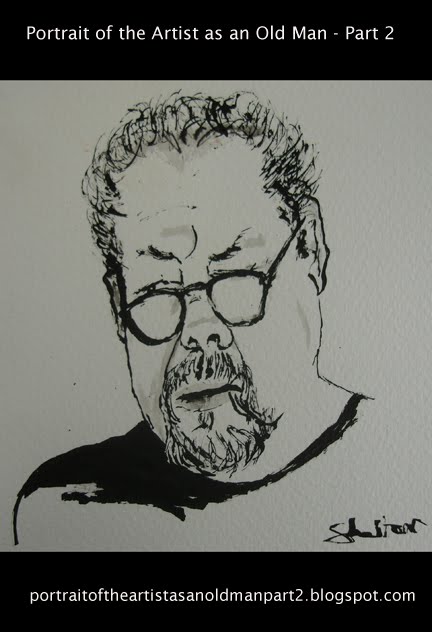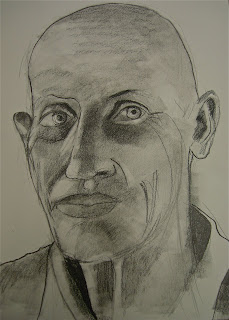
“When I was twenty, I could have jumped out of that window and not have gotten hurt because I had some great legs. Now if I jumped off a step I’d probably break a hip. It’s inevitable the body gives out.” Willie told me this during an interview on Orcas Island, one of the San Juan Islands in Washington State, where he has lived for the past ten years.
Willie is eighty. I interviewed him in a second story office belonging to Andrew Youngren. Andrew developed and maintains Willie’s website, jazzeveryone.com.
(Full disclosure: six days after the interview took place Andrew would marry my stepdaughter Emily and become my son-in-law.)
Willie has been playing trumpet for close to seventy years.
“I can’t play as high or as long, but I can play smarter. My ability to grasp and deal with the concepts is stronger, but the muscles are weaker. The lips are muscles like any other muscles. How long and how tight can you keep your lips together? You’re constantly flexing and retracting your lips. Everything is somewhat controlled by what you can physically do.”
Willie loves to talk and tell stories. He gives a great interview. Often, he’ll get going on a sentence headed in one direction and then jump to a tangential topic or even something unrelated. Sometimes he loops around and gets back to the main point, sometimes not. He can be snappy and impulsive or slow and thoughtful. Maybe this vocal style reflects years of jazz improvisation. Maybe he relates to conversation the same way he relates to written melody; something to be played with, something to be made uniquely your own.
Willie talked about his career as a performing jazzman as “biting the apple.”
“New York is the Big Apple,” he said. In the late fifties and sixties he played in and around New York City with some of the great jazz musicians of the be bop era. “A bite of the apple also means something good you get a bite of and want more. One bite leads to another.”
The apple is, of course, also the forbidden fruit, the symbol for original sin. “Go ahead and bite it I bet you’d be delighted.” (From the Oscar Brown Jr. song Forbidden Fruit.) Delighted, yeah, but biting that apple inevitably leads to expulsion from the garden.
From his late teens to his early thirties, the period Willie refers to as his “playing year,” his story was dominated by where, when and with whom he made music. The plot line is of a steady climb to the top of the jazz hierarchy and the plot device is being in the right place at the right time. Willie puts a lot of emphasis on the beat. Timing is everything, well almost everything. His life story is like that, too.
After avoiding the draft for several years, when he finally landed in the army, he was tapped to be in a jazz group attached to the Third Army Band. His unit included the pianist Wynton Kelly who would become his teacher and mentor and the key that opened the door to the New York jazz scene.
More than once, the group Willie was playing with opened for a more renowned ensemble whose trumpet player was drunk, AWOL, or otherwise indisposed. Willie would sit in for the missing player, get the gig, and move on with the better-known band.
Over the next ten years Willie worked steadily, playing and recording with such musicians as Phineas Newborn, Al Belleto, Woody Herman, Walter Perkins, Peggy Lee, and Slide Hampton.
Willie got married to the singer Jerri Winters. She was beautiful and talented. You can listen to her sing “In the Wee Small Hours” on Youtube and be reminded how good someone can be without ever being famous.
In a photo from the sixties, an album cover for MJT+3 (Modern Jazz Two + 3 Quintet), Willie shows up as a blond, pale, nondescript white boy sitting, literally, in the shadow of four, debonair black guys. “Blacks don’t own music,” the eighty-year-old Willie said. “But, jazz is certainly their domain. I had to prove I could do it.” With evident pride, he told the story of the time Dinah Washington grabbed him after a solo and said, “You sure got some soul for a white boy.”
Meanwhile… however… but… at the same time… under the surface… all was not well… Willie had a cocaine habit he couldn’t fund. He dealt some drugs. He got busted and went to jail. He got a light sentence, time served and three years probation, but he lost his cabaret card. From Prohibition to 1967, in order to appear in a New York nightclub, performers had to have this license issued by the city. Willie was in good company in being banished from the Big Apple. Chet Baker, Charlie Parker, Thelonious Monk, Billy Holiday and Lenny Bruce had also had their cards revoked. However, these more famous performers could find work elsewhere. For Willie, it was as though a flaming sword had been placed in his way. Not being able to play jazz in New York City clubs essentially ended his career.
When Adam and Eve got a bigger bite of that Apple than they could chew they got banished east of Eden. Willie went west, briefly, to Texas, then south to his hometown of Orlando.
After their banishment Adam and Eve had a pack of troubles. One of their sons killed the other. This fratricide led to the exile of the survivor, Cain. He got married to some woman from god knows where. Things just went from bad to worse.
Willie, on the other hand, reinvented himself as a jazz educator, kicking off act two of this American life.
In Orlando, Willie taught third grade, married for a second time, opened a music store, then another, and another.
“It was like, buy my instruments and I’ll give you lessons,” He said. He found he had a good instinct for teaching. He began to think deeply and systematically about how to develop jazz basics in young musicians.
He said, “I’m at a serious level of ability in my field, not the summit, but up there. There are better players than me, sure, but not many of those people can tell you a word about what they do. There are similarities about what people do to get there. You got to be able to analyze that, break it down into simple steps in order to be able to teach it.”
Willie created a system for teaching jazz and a curriculum that he marketed to schools along with workshops and stints as an artist in residence. He liked the work and, without ever focusing on it, he made money.
His theories and lessons are now available on line. “Jazz Everyone,” Willie said, “Serves the community in a more complete way than is available any where else.”
“So, Willie,” I said during the interview. “Given that you’re eighty, you must spend some time thinking about the fact that you’re not going to be around forever.”
“No,” he said. “I’ll be here forever. I’m part of one giant paradigm of consciousness that gets organized into a sense of self. That’s ego. Right now I’m convinced I’m here as Willie Thomas, but the paradigm will reorganize itself and I’ll be convinced I’m someone else.”
I’m not sure if he is putting me on or not.
Andrew has returned to the office and is working at his computer.
“Hey, Andrew,” Willie calls out. “Google ‘Vedanta’ or some shit like that. It’s all in there. I’m not apprehensive. I’m aware it could be harder or easier. I don’t dwell on it because I stay busy.”
“When you get to be my age,” he continues, “People start telling you there’s stuff you can’t do, stuff you shouldn’t do. You got to watch that shit. You can start believing it and that creates limits, self-imposed boundaries. I’m going to do the opposite. I’m going to make sure I got something to do that keeps me going beyond my limits.”
Willie has a special interest in two trumpet players, brothers, Ryan and Justin Kisor, that he began working with when they were in high school in Sioux City, Iowa. Ryan is a member of the Jazz at Lincoln Center Orchestra and regularly plays with jazz luminaries such as Wynton Marsalis, Wycliffe Gordon, and Horace Silver. Justin is just out of the service and is starting to build his career. Willie plans to spend next fall in Sioux City giving Justin a hand.
“It’s an ego thing,” He said. “A power trip. I know I can do it so I want to do it just because I can.”
I said, “That seems to me the best of possibilities; when you do good for someone else and feed your own ego at the same time.”
And I think, “It is a good way to keep the giant paradigm of consciousness organized in such a way that you stay convinced you are Willie Thomas, at least for a few more years.”



















